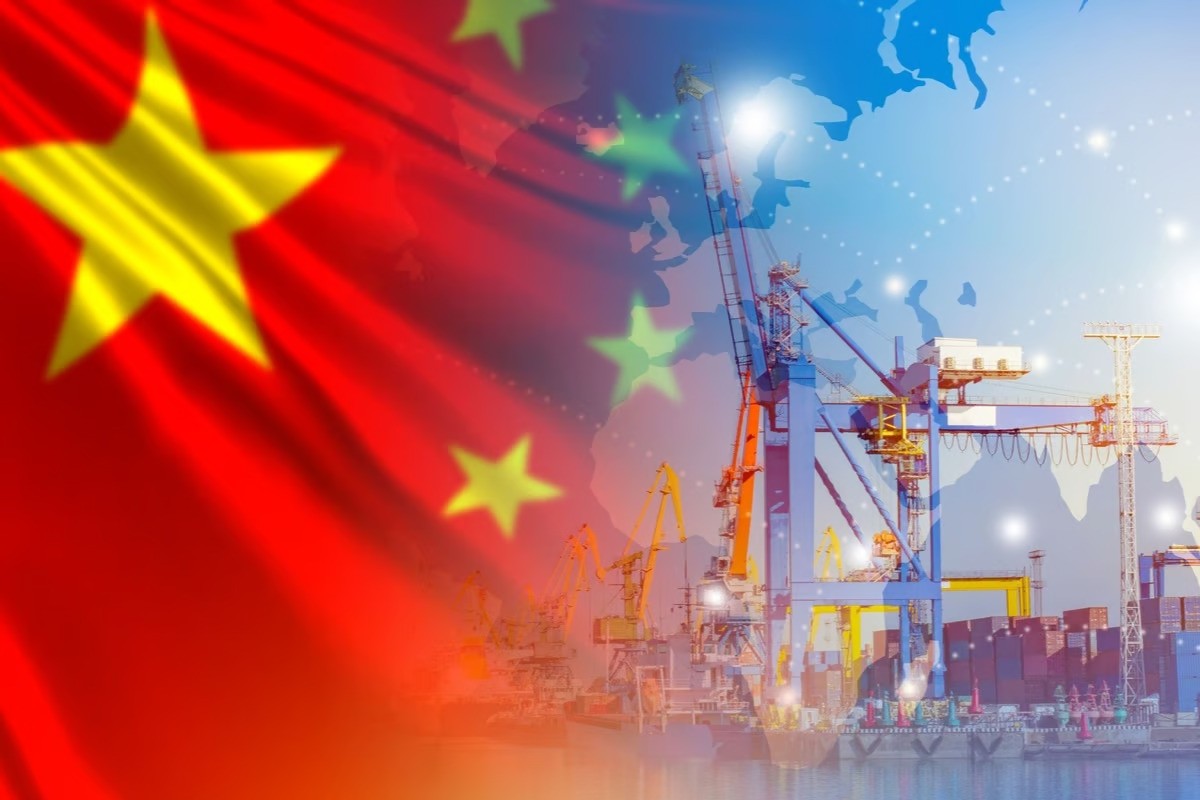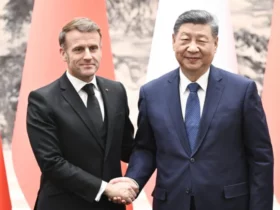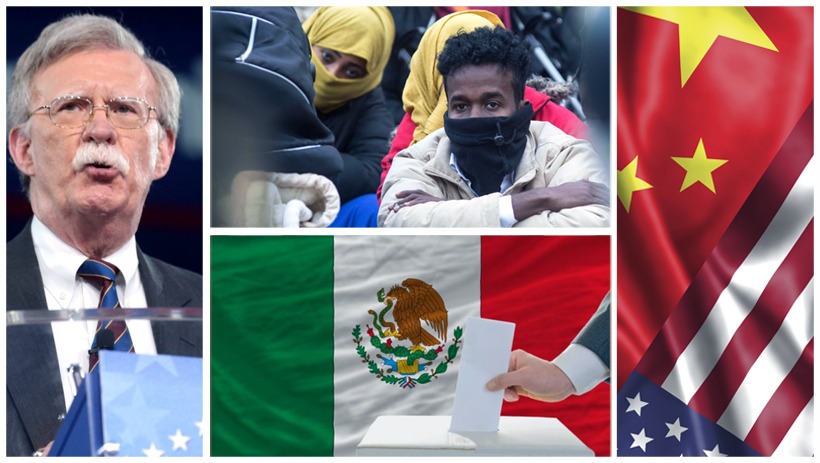State Support and Global Competition
State Support and Global Competition
By Mehmet Enes Beşer
The People’s Republic of China has undergone rapid economic development since initiating its reform and opening-up policies in 1978, during which the logistics sector has experienced significant transformation. Comprehensive investments in road, rail, air, and maritime transportation since the 1990s have established a modern logistics infrastructure. This infrastructure serves as a critical foundation for accelerating global trade and expanding China’s foreign trade volume.
State policies and support mechanisms have played a decisive role in these developments. Tax incentives, financial subsidies, low-interest loans, and subsidies for technology investments have enabled Chinese logistics companies to grow rapidly and enhance their global competitiveness. Advanced solutions such as big data analytics, artificial intelligence, and automation technologies have been integrated into the sector, reducing delivery times, lowering costs, and improving efficiency. The Belt and Road Initiative (BRI) and its subprojects have not only consolidated China’s logistical dominance, but also positively influenced neighboring countries’ infrastructure and trade capacities.
This article examines the state policies and support mechanisms driving China’s rapid rise in logistics, analyzing the core dynamics of its position in global competition. It evaluates the impact of recent developments, such as the BRI, the Middle Corridor Strategy, and the proliferation of e-commerce, while discussing future projections and strategic perspectives. This highlights how China’s logistics transformation has become a cornerstone shaping the future of global trade.
Historical Development and Infrastructure Investments
Since adopting reform and opening-up policies in 1978, China has prioritized infrastructure modernization. By the 1990s, large-scale investments in road, rail, air, and maritime networks transformed its logistics landscape. For instance, China’s road network spans 4.5 million kilometers, including 120,000 kilometers of expressways, while its railway network extends over 112,000 kilometers. The logistics sector’s economic scale reached $46.5 billion in 2019 (T.C. Pekin Büyükelçiliği, 2022), contributing to regional development and reducing disparities. Infrastructure expansion in western regions, such as railways and highways, accelerated economic growth.
Technological advancements further boosted sector efficiency. Smart logistics systems, big data analytics, and automation optimized transportation processes, reduced costs, and shortened delivery times. AI applications in warehousing and inventory management improved stock control, enabling companies to respond swiftly to shifting customer demands. Real-time tracking, route optimization, and autonomous vehicles are reshaping logistics, while blockchain-based systems enhance supply chain transparency and traceability.
In 2024, China’s exports rose by 5.9% year-on-year to $3.58 trillion, resulting in a record trade surplus of $992.1 billion (Aytekin, 2024). This success owes much to China’s advanced logistics infrastructure. Shanghai Port, for example, handled 47 million TEUs in 2023 (Ekonomi Dünya, 2024). The BRI has created a vast logistics network across Asia, Europe, and Africa, diversifying China’s export markets and securing supply chains.
State Support and Policies
China’s logistics growth is underpinned by comprehensive state support, including tax incentives, financial subsidies, and technological innovation promotion. Government-backed firms benefit from low-interest loans, tax breaks, and subsidized energy. State investment funds provide billions in equity financing. For example, Contemporary Amperex Technology (CATL) received a subsidy of 5.7 billion yuan ($790 million) in 2023 (Ekonomim, 2024). These mechanisms facilitate high-value sector transitions and global competitiveness.
Port investments underpin China’s economic resilience despite global challenges. Land subsidies for logistics facilities further drive sector expansion. Modern port technologies and streamlined customs processes strengthen China’s export competitiveness (The Economist, 2020). Road transport efficiency has improved through traffic regulations and infrastructure upgrades. Smart traffic management systems and digital tracking platforms reduce delays and costs. Reduced bureaucratic barriers attract foreign investment, enhancing China’s global road transport competitiveness.
Infrastructure Investments and Regional Development
China’s infrastructure investments promote regional development and global trade integration. Launched in 2013, the BRI aims to expand China’s trade network and improve participating countries’ transport infrastructure. It focuses on boosting industrial capacity, expanding trade routes, and facilitating the flow of goods, raw materials, energy, and capital (Çelik, Akyar & Ceylan, 2022).
China has introduced 15 measures to accelerate western regions’ development, including international aviation hubs and integrated transport networks in Chengdu, Chongqing, Kunming, Xi’an, and Urumqi (Reuters, 2025). These efforts aim to enhance regional connectivity and attract investment.
Under the Middle Corridor Strategy, China has invested in high-capacity ports in the Caspian region, such as Aktau and Baku, integrating Central Asia’s energy and logistics hubs with Europe (Mamedov, 2024). Overseas investments in energy, logistics, and real estate expand China’s trade networks and regional development (Özev & İstikbal, 2020).
Global Competition and Future Perspectives
China’s logistics sector has achieved global prominence through strategic investments and initiatives like “Made in China 2025,” which aims to modernize industry, foster innovation, and reduce environmental impact (XpertDigital, n.d.). Digitalization and smart logistics solutions are expected to dominate, alongside green logistics practices to reduce carbon footprints (Tuerxun, 2020).
E-commerce growth demands flexible and rapid logistics solutions, making supply chain diversity and resilience critical (Satınalma Dergisi, 2024). Geopolitical shifts, such as the Middle Corridor’s rising importance, highlight alternative trade routes. Cargo volume along this corridor surged by 84% in January-August 2023, exceeding 1.6 million tons (Korkmaz, 2024).
Conclusion
China’s logistics sector owes its rapid rise to state support, infrastructure investments, and technological innovation. Tax incentives, subsidies, and R&D programs have enabled firms to leverage economies of scale and innovate. Modern ports, integrated transport networks, and the BRI position China as a global logistics hub.
Future sustainability efforts, green logistics, and e-commerce-driven innovations will reshape competition. China’s “Made in China 2025” strategy and green practices will reinforce its leadership. Geopolitical dynamics, such as the Middle Corridor, necessitate diversified strategies. China’s logistics transformation not only boosts its economy but also redefines regional and global trade dynamics, creating new opportunities and competitive landscapes.
References
Aytekin, E. (2024, Mart 8). Çin’in dış ticaret fazlası Trump öncesi ihracat artışıyla rekor seviyeye ulaştı. Anadolu Ajansı. https://www.aa.com.tr/tr/dunya/cinin-dis-ticaret-fazlasi-trump-oncesi-ihracat-atisiyla-rekor-seviyeye-ulasti/3448662
Çelik, M.S., Akyar, D.A. ve Ceylan, B.O. (2022). Bir Kuşak Bir Yol Projesinin Ortaya Çıkışındaki Ana Etmenler: Çin Halk Cumhuriyeti (ÇHC) Bakış Açısı. Fırat Üniversitesi Sosyal Bilimler Dergisi, 32, 3(1125-1139). DOI:10.18069/firatsbed.1101869
Ekonomi Dünya. (2024). Shanghai Limanı’nda elleçlenen konteyner hacmi 47,3 milyon TEU’ya ulaştı. Retrieved March 13, 2025, from https://www.ekonomidunya.com/shanghai-limani-nda-elleclenen-konteyner-hacmi-47-3-milyon-teu-ya-ulasti/38907/
Ekonomim. (2024). Çin’de şirketlere verilen destekler ticaret savaşlarını körüklüyor. https://www.ekonomim.com/kuresel-ekonomi/cinde-sirketlere-verilen-destekler-ticaret-savaslarini-korukluyor-haberi-759942
Korkmaz, H. (2024). Koridor jeopolitiği 2025. TASAM. Retrieved March 13, 2025, from https://tasam.org/tr-TR/Icerik/73717/koridor_jeopolitigi_2025
Mamedov, E. (2024). Çin’in Orta Koridor stratejisindeki yeni hamleleri. Kuşak ve Yol. https://www.kusakveyol.org/cinin-orta-koridor-stratejisindeki-yeni-hamleleri/
Özev, M. H., & İstikbal, D. (2020). Kuşak ve yol girişimi: Küresel ekonomik güç mücadelesinde Çin ve Türkiye’nin konumu [Rapor]. SETA.
https://www.setav.org/assets/uploads/2020/11/A339.pdf
Xpert Digital. (n.d.). Çin’de yapıldı 2025. Retrieved March 13, 2025, from https://xpert.digital/tr/cin-39-de-yapildi-2025/
Reuters. (2025). China seeks to bolster ports and aviation hubs in western regions. https://www.reuters.com/world/china/china-seeks-bolster-ports-aviation-hubs-western-regions-2025-01-05/
Satınalma Dergisi. (2024). 2025’te dış ticaret ve lojistik sektörünü neler bekliyor? Retrieved March 13, 2025, from https://satinalmadergisi.com/2025te-dis-ticaret-ve-lojistik-sektorunu-neler-bekliyor/
T.C. Pekin Büyükelçiliği. (2022). Çin ülke profili. https://pekin-be.mfa.gov.tr/Content/assets/consulate/images/localCache/1/2c2144b7-74f7-407d-9c5b-e07ec3a91478.pdf
The Economist. (2020, Şubat 6). China is making substantial investment in ports and pipelines worldwide. Retrieved March 13, 2025, from https://www.economist.com/special-report/2020/02/06/china-is-making-substantial-investment-in-ports-and-pipelines-worldwide
Tuerxun, G. (2020). “Kuşak ve Yol” Girişimi Kapsamında Çin-Türkiye Lojistik İş Birliği [Yüksek lisans tezi, İstanbul Ticaret Üniversitesi]. YÖK Açık Bilim. https://acikbilim.yok.gov.tr/bitstream/handle/20.500.12812/95934/yokAcikBilim_10159882.pdf?isAllowed=y&sequence=-1

















Leave a Reply